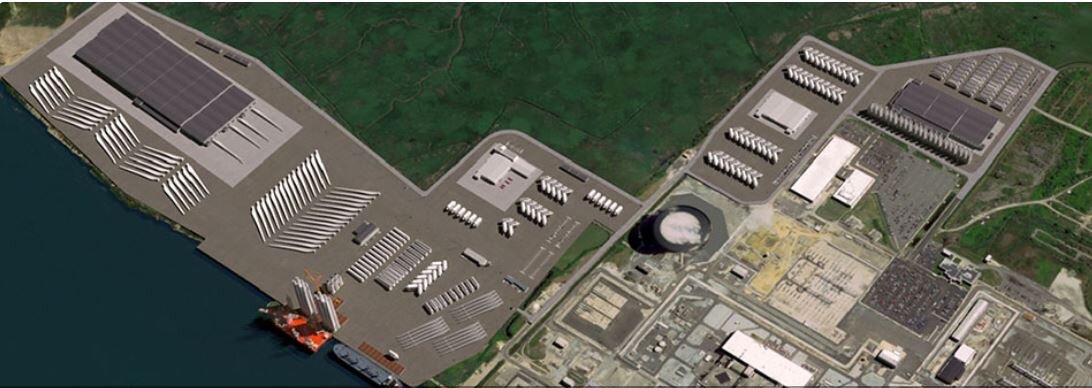Pennsylvania's move to join RGGI could have dramatic origination implications
A recent vote from the Pennsylvania Department of Environmental Protection has set the stage for Pennsylvania to join the Northeast Regional Greenhouse Gas Initiative (RGGI), a move that could have dramatic implications for renewable origination in the region over the next decade.
Through RGGI, participating states put a cap on allowable carbon emissions. This creates a system by which states auction off "carbon allowances" to emitting plants on a quarterly basis. They then invest much of the proceeds into renewable energy and energy efficiency. The goal for this process is to essentially speed up the pace of the energy transition through the rapid adoption of renewables to replace carbon-intensive resources.
So far, that’s exactly what has happened. A report released by RGGI in June shows that over 58 percent of 2019 proceeds from RGGI went toward renewable energy and energy efficiency investments. Since 2019, 68 percent of the USD 2.8bn raised have gone into those two buckets. This has led to a 47 percent carbon reduction since 2009 by member states. In an interview with NPM, Mandy Werner, the Director of Climate and Clean Air Policy for the Environmental Defense Fund, said its figures like these that have led her to lobby for Pennsylvania’s entrance into RGGI for years.
“RGGI is a proven program,” Werner said. “It guarantees emission reductions and offers an opportunity for Pennsylvania to invest its proceeds where it wants to.”
Pennsylvania’s Potential
There are a couple of factors that make Pennsylvania's entrance into the RGGI particularly noteworthy. One is the simple geographical footprint of the state, which is much larger than the majority of other member states which include Connecticut, Delaware, Maine, Maryland, Massachusetts, New Hampshire, New Jersey, New York, Rhode Island, Vermont and Virginia. As such, the state has much greater renewable energy capacity potential than almost any other in the RGGI, which could make it a major hub for project origination.
“There is a Pennsylvania-sized hole from Pennsylvania to Maine,” Werner said.
Pennsylvania also currently emits more carbon than almost any other state in the nation. As a result, the state's carbon emission downward trajectory will have to be much steeper than its neighbors, which will also result in higher proceeds from cap-and-trade auctions. Currently, Pennsylvania ranks as the fifth most carbon-intensive state in the nation and produces more natural gas than any other state besides Texas. As a result, current DEP projections for annual proceeds for cap-and-trade land between USD 131m and 187m, which almost matches the USD 217m that every member state collectively raised in 2019.
So far, according to NPM data, Pennsylvania already has more than 18 GW of pre-development renewable projects in the PJM queue which includes projects from high-profile developers including Pattern Energy and Jupiter Power. While the majority of the state's current renewable capacity comes from wind, which accounts for over 2 GW already, 16 of the incoming 18 GW of pre-operational projects are either solar or solar + storage.
But additional data shared with NPM by Werner indicates that, if Pennsylvania joins RGGI, those origination numbers could be just the beginning. According to EDF modeling, Pennsylvania’s entrance into RGGI would lead to a 2 GW expansion of solar within the region to replace retiring carbon-intensive resources. And, as Werner explains, that’s before factoring in additional investments into the sector that Pennsylvania could deploy.
“Those who are able to generate power with zero emissions are going to be significantly benefitted by this,” Werner said. “RGGI inherently adds value for renewable sources.”
Barriers for Entry
While entry into the RGGI would accelerate the pace of renewable investments, there has been strong lobbying in-state against this over, among other reasons, the accelerated retirement of the state’s existing coal mines and subsequent loss of jobs.
While the standard procedure is for the new regulations to be sent to the desk of the state's Attorney General for review and approval, many prominent Republicans, the majority party in the Pennsylvania General Assembly, are already working on plans to pass legislation that would block the state's participation in RGGI citing an "inevitable increase in energy costs" and "thousands of job-losses" through the expedited closure of the state's remaining coal-fired power plants.
On September 2, the Republican-led House Environmental Resources and Energy Committee, which previously drafted letters noting its opposition to joining the RGGI, held a vote on a concurrent resolution disapproving the new regulation. This resolution will now proceed to the House floor for consideration by the full body, a development that is already being trumpeted by fossil fuel lobbyists in the state.
"We appreciate their courage to stand up against Governor Wolf and well-funded radical environmental groups and instead side with organized labor and the thousands of blue collar and union families and communities directly impacted by RGGI," the Power Pennsylvania Jobs Alliance said in a statement yesterday.
However, in order for this new resolution to hold sway, Republicans would need to secure enough Democratic support to meet the two-thirds majority threshold required for a veto-proof majority, something Werner says is unlikely to happen given the governor's staunch support for the move.
“It’s very unfortunate that the legislature is trying to obstruct, but we’re pretty confident that this will move forward,” Werner said.
While EDF is advocating that Pennsylvania join the program as soon as January 2022, they recognize that obstruction efforts and the state’s own regulatory procedures may push that back to 2Q2022.
“At the very least, we’re confident that Pennsylvania will join the program in the first half of next year,” Werner said.




